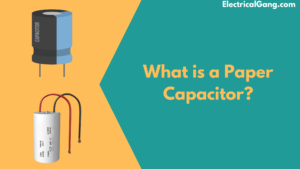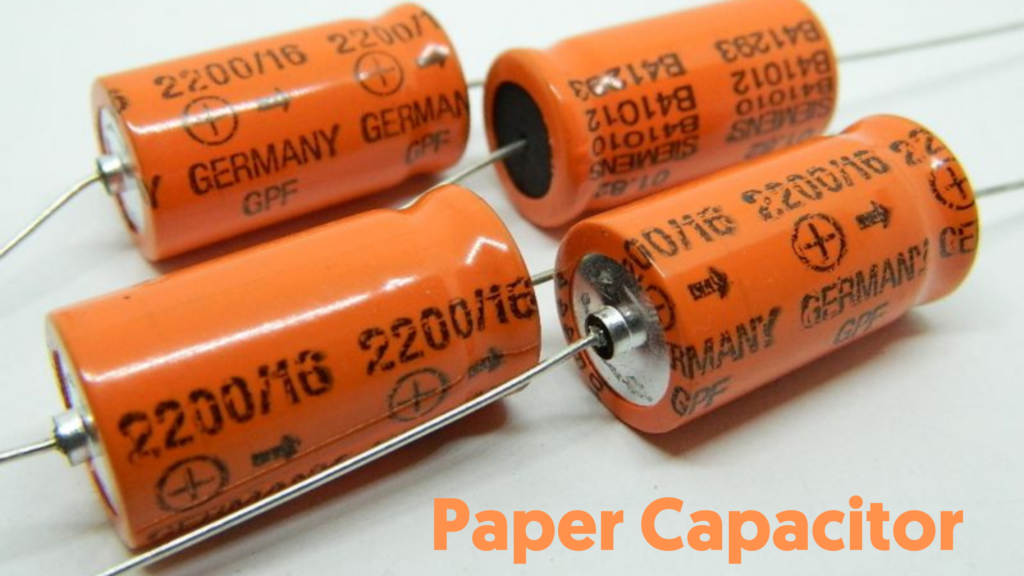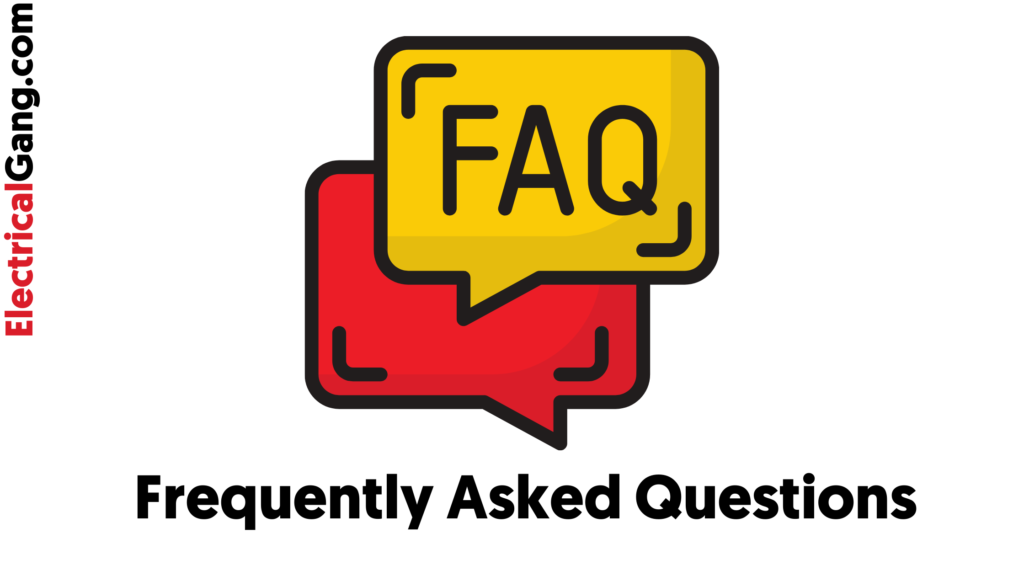
Resistors and capacitors are used in every electronic circuit as passive components for resistance and storage of electrical energy. Paper capacitors are also commonly referred to as condensers. Which is composed of two operating surfaces separated by an insulating material. This material is called dielectric.
The capacitor produces low resistance for AC voltage while providing high resistance for DC voltage from one circuit to another. This capacitance of the circuit is stored in the form of an electric field. It resists the flow of voltage in any electronic circuit. And stops the flow of direct current passing through it.
In today’s article, we will see what is the construction of paper capacitors and what are its applications. And much more about it.
What is a Paper Capacitor?

A paper Capacitor is also known as a fixed capacitor. In which paper is used as a dielectric medium. Which stores energy in the form of an electric field. Such a capacitor is used with a capacitance value of 1nF to 1uF at the power line frequency. It stores a fixed amount of electric charge.
Suggested Read: What is a Filter Capacitor? | Working of Filter Capacitor
Working of Paper Capacitor:

A paper capacitor is made up of two metallic plates. Which paper is used as the dielectric material between them? Which has positive and negative plates. When an electric charge is applied to this plate, the positive plate is attracted to one side and the negative charge is attracted to the other plate.
This electrical energy is stored in the form of an electric field. This collected electrical energy is used by discharging the capacitor. These range from 500pF to 50nF. This gives a high leakage current.
Paper Capacitor Values:
The capacitance of a paper capacitor is measured in the units of Faraday. The capacitance range of such a capacitor varies from 0.001 to 2.000 microfarads to a high voltage range of 2000V. At the beginning of this capacitor, the paper was used as a dielectric medium between two aluminum sheets.
But now other materials like plastic are also used in place of paper. This capacitor is readily available in the range of 300 picofarads to 4 microfarads with a working voltage of 600 volts.
Construction of Paper Capacitor:
The manufacture of paper capacitors is classified into two types as follows:
- Paper sheet capacitor.
- Metalized paper capacitor.
#1. Paper Sheet Capacitor:
The construction of this capacitor requires two pieces of aluminum sheet and one sheet of paper. The paper sheet is completely covered with wax to protect it from the open-air outside. A paper capacitor is a fixed capacitor that stores a fixed amount of electric charge with a fixed charge capacitance value.
The aluminum plate of the paper sheet is placed between the sheets which act as a dielectric medium. While aluminum acts as an electrode. Paper is a very poor conductor of electricity and does not allow an electric current to pass between the aluminum sheets.
Which allows the electric field through it. Acts as a barrier to electric current. Paper sheets and aluminum sheets are rotated into cylindrical shapes. The entire cylinder is coated with wax or plastic resin to protect it from outside air humidity and two-wire leads are taken from the ends of two aluminum sheets.
#2. Metalized Paper Capacitor:
In this paper capacitor, the paper is coated with a thin layer of zinc or aluminum. And rotated in the form of a cylinder. The entire cylinder is completely coated with wax to protect it from dust and moisture in the outside environment. Metallic paper electrodes and paper act as dielectric mediums.
This type of capacitor coated with zinc can be destroyed very easily due to chemical action. That is why aluminum is widely used in the construction of such capacitors. When paper sheet capacitors and metal paper capacitors are compared, the size of metal paper capacitors is smaller. This is because when compared to the aluminum wrapped in a paper sheet capacitor, it has a very thin layer of aluminum.
Advantages & Disadvantages of Paper Capacitor:
- The main advantage of using a paper capacitor is that it provides a fixed value of capacitance. And the value of capacitance during its production can be determined.
- The main disadvantage of paper capacitors is that they absorb moisture from the atmosphere. And reduces the insulation resistance of the dielectric. The dielectric medium affects it as it absorbs moisture from the atmosphere.
Suggested Read: Difference Between Capacitor And Battery │Capacitor vs Battery
Applications/Uses of Paper Capacitor:
The different uses of paper capacitors are as follows:
- In electrical and electronic circuits.
- In high voltage and high current applications.
- Used as a sensor to measure air humidity, fuel level, and mechanical stress.
- In-car audio systems are used to add extra power to the amplifier as needed.
- Used in electronic noise filtering, signal coupling, and decoupling systems, remote sensing.
- Blocks the DC signal in the power conditioning system and allows the AC signal to pass.
- Used in signal processing systems such as speakers, dynamic random access memory (DRAM), tune circuits, radio receivers, and analog equalizers.
Most Commonly Asked Questions:

What is the use of a paper capacitor?
A paper capacitor is a fixed capacitor. A paper capacitor is an electronic device for collecting or storing electrical energy in the form of an electric field. It is used in various high-voltage and high-current applications.
How is a paper capacitor made?
The construction of this paper capacitor requires two aluminum sheets and one sheet of paper. The paper acts as a dielectric between aluminum sheets. And aluminum sheets act as electrodes. The paper sheet acts as a barrier for electric current between the aluminum sheets.
What are the types of Capacitors?
There are 4 types of capacitors. They are,
- Ceramic capacitors.
- Dielectric capacitors.
- Film capacitors.
- Paper capacitors.
- Electrolytic capacitors.
What are the two types of capacitors?
Capacitors are divided into two main mechanical groups. One is a fixed capacitor with a value of fixed capacitance and the other is a variable capacitor with a value of a variable or adjustable capacitance. The most important group is fixed capacitors. Many got their names from dielectrics.
Like this post? Share it with your friends!
Suggested Read –